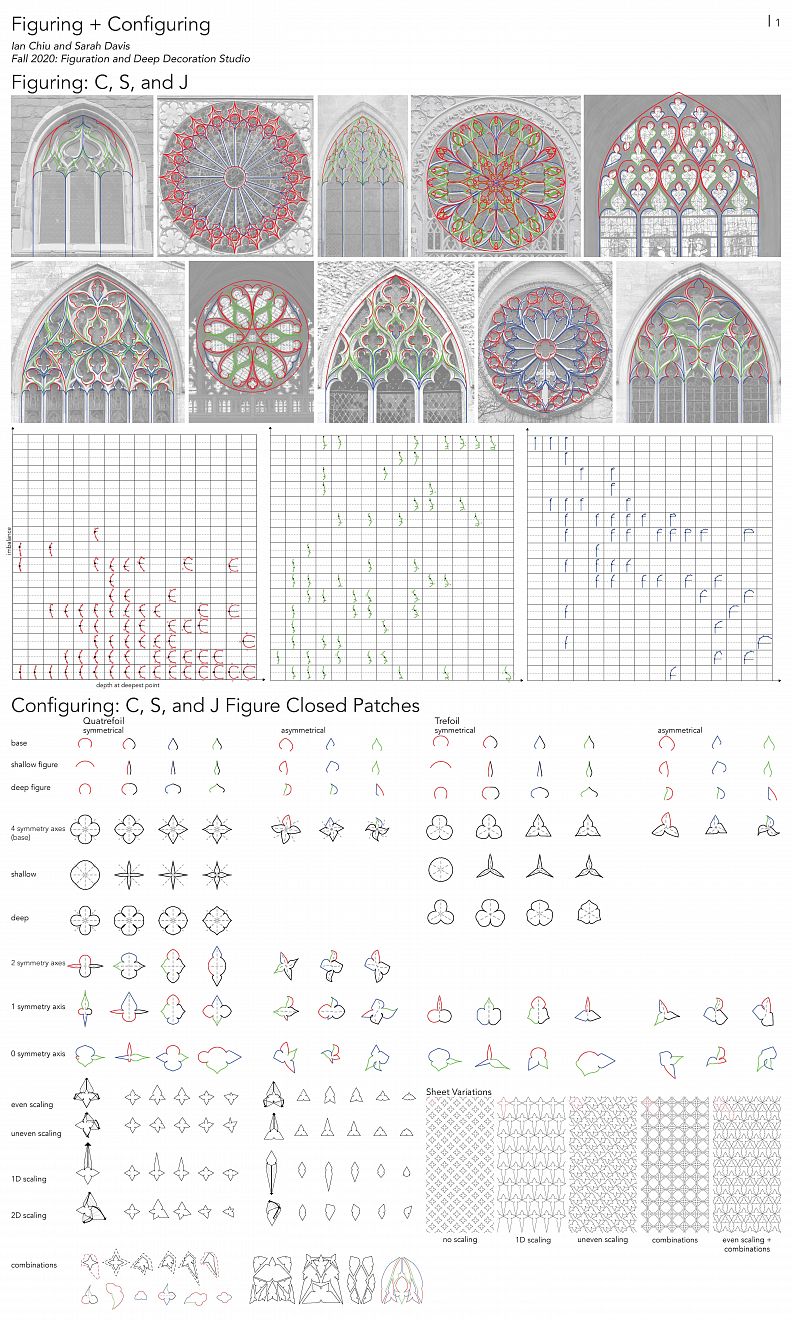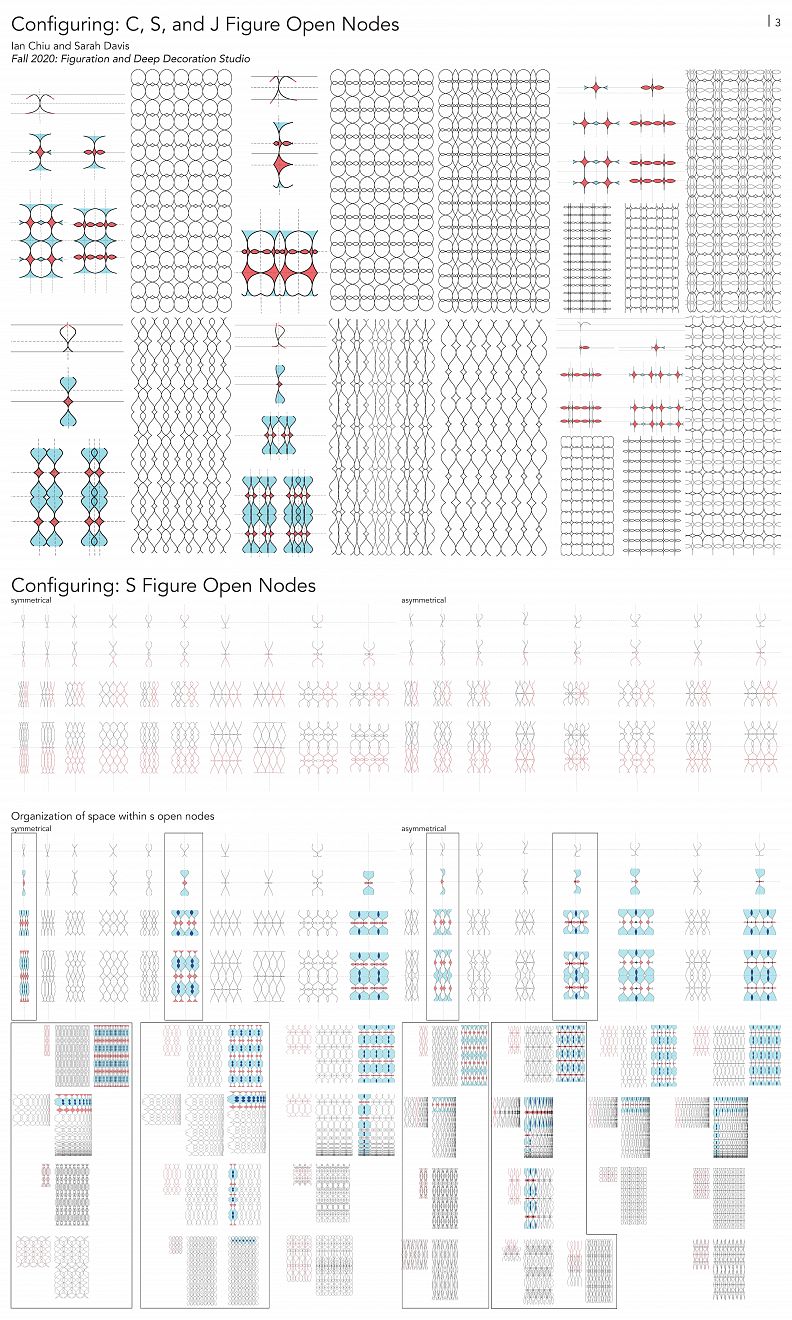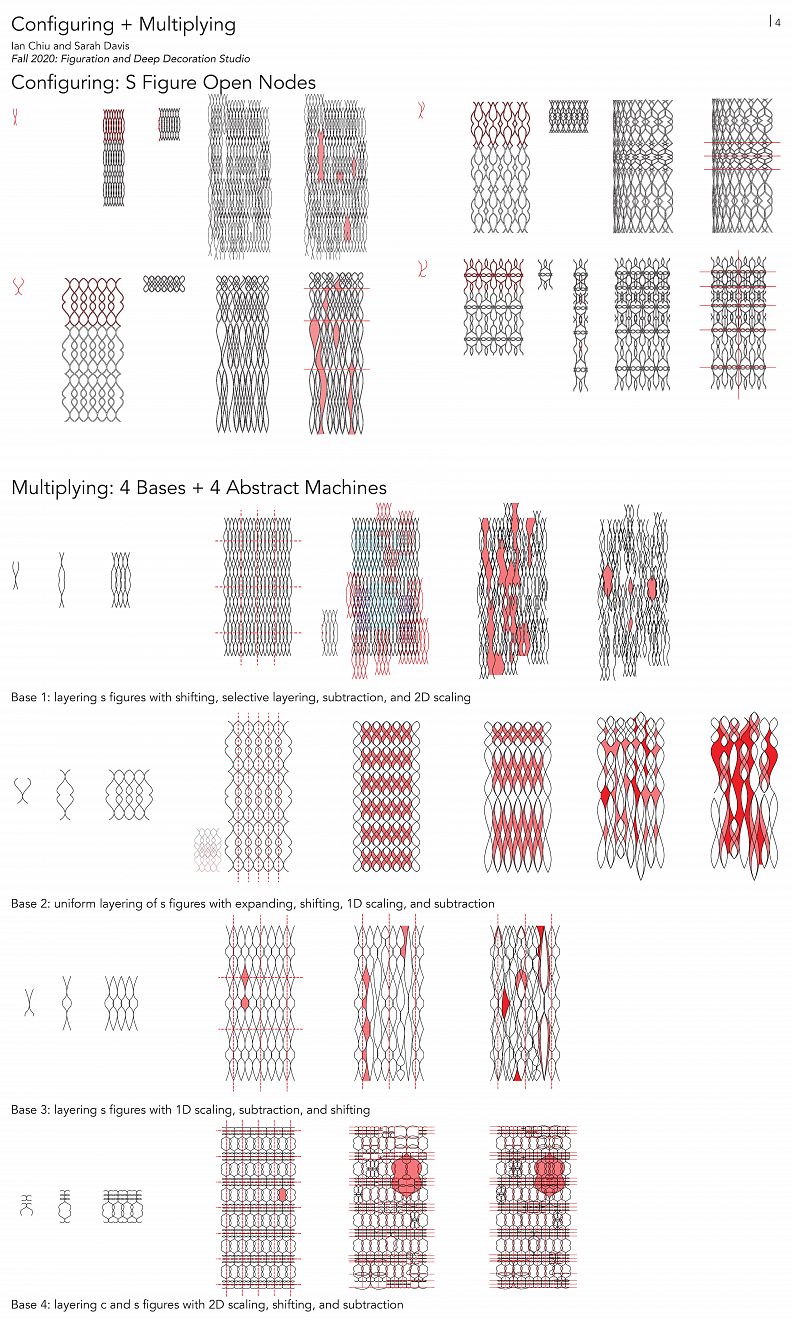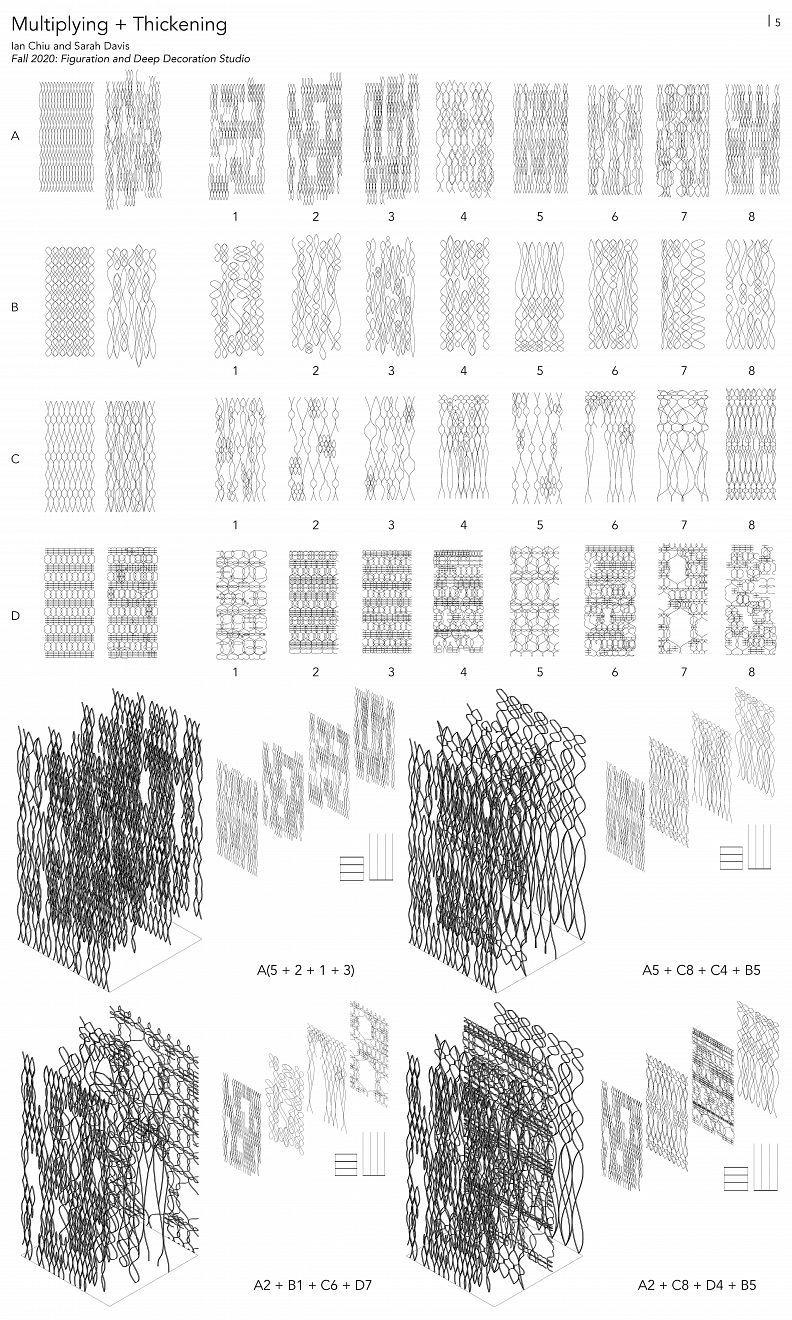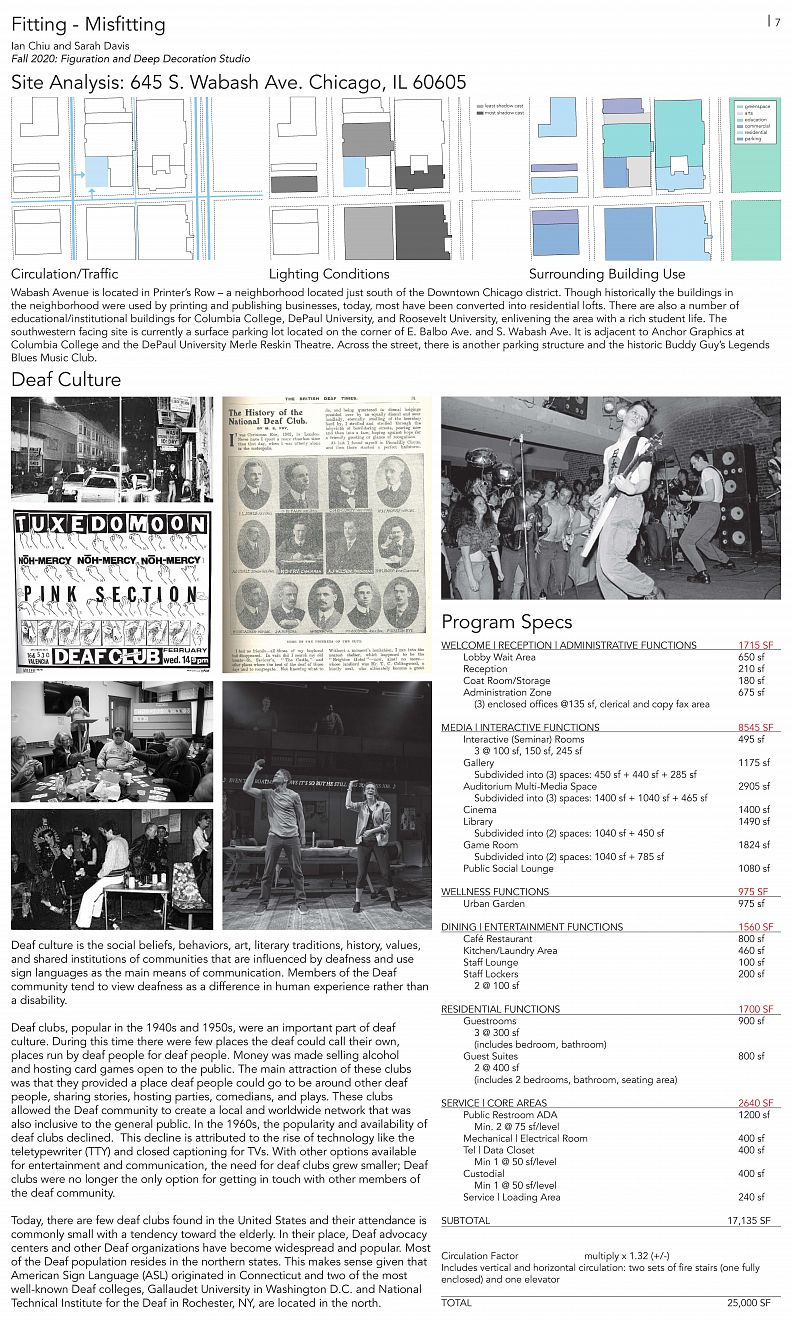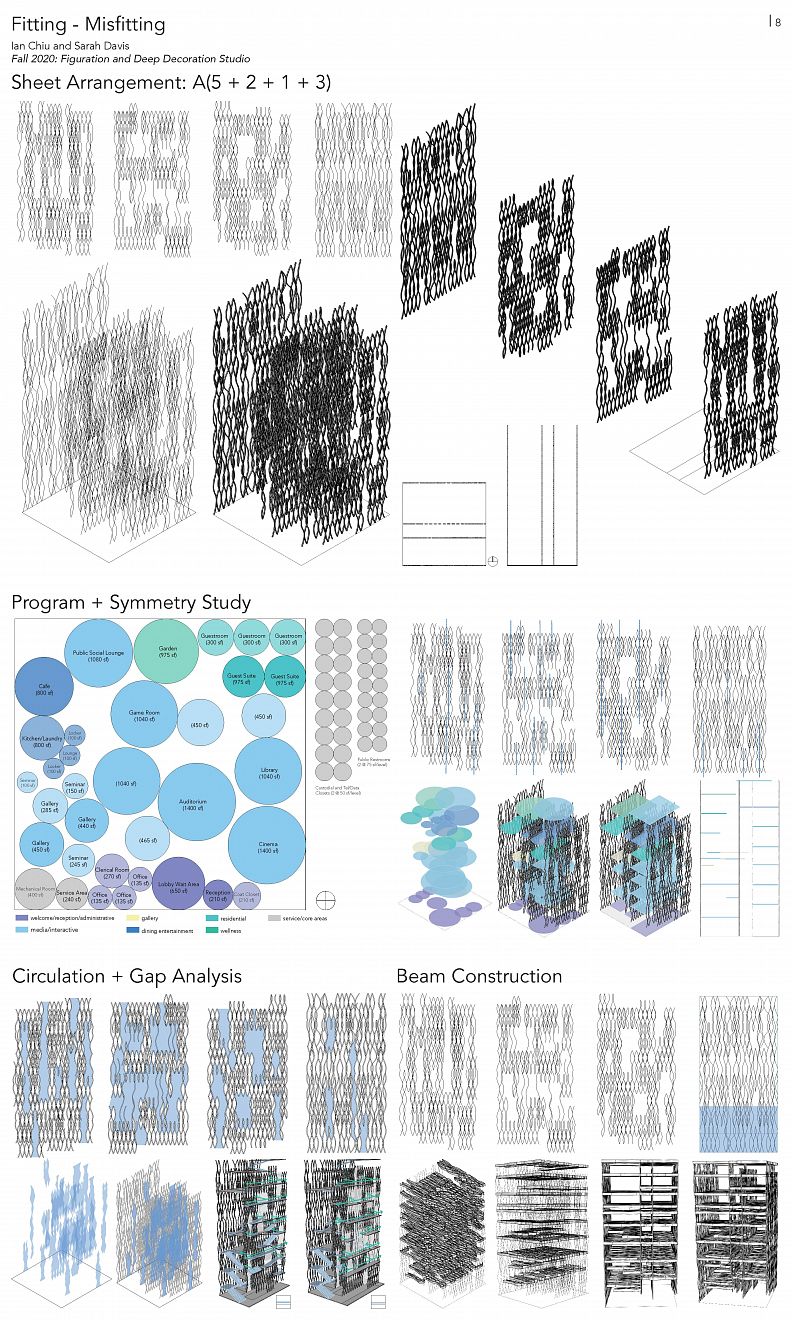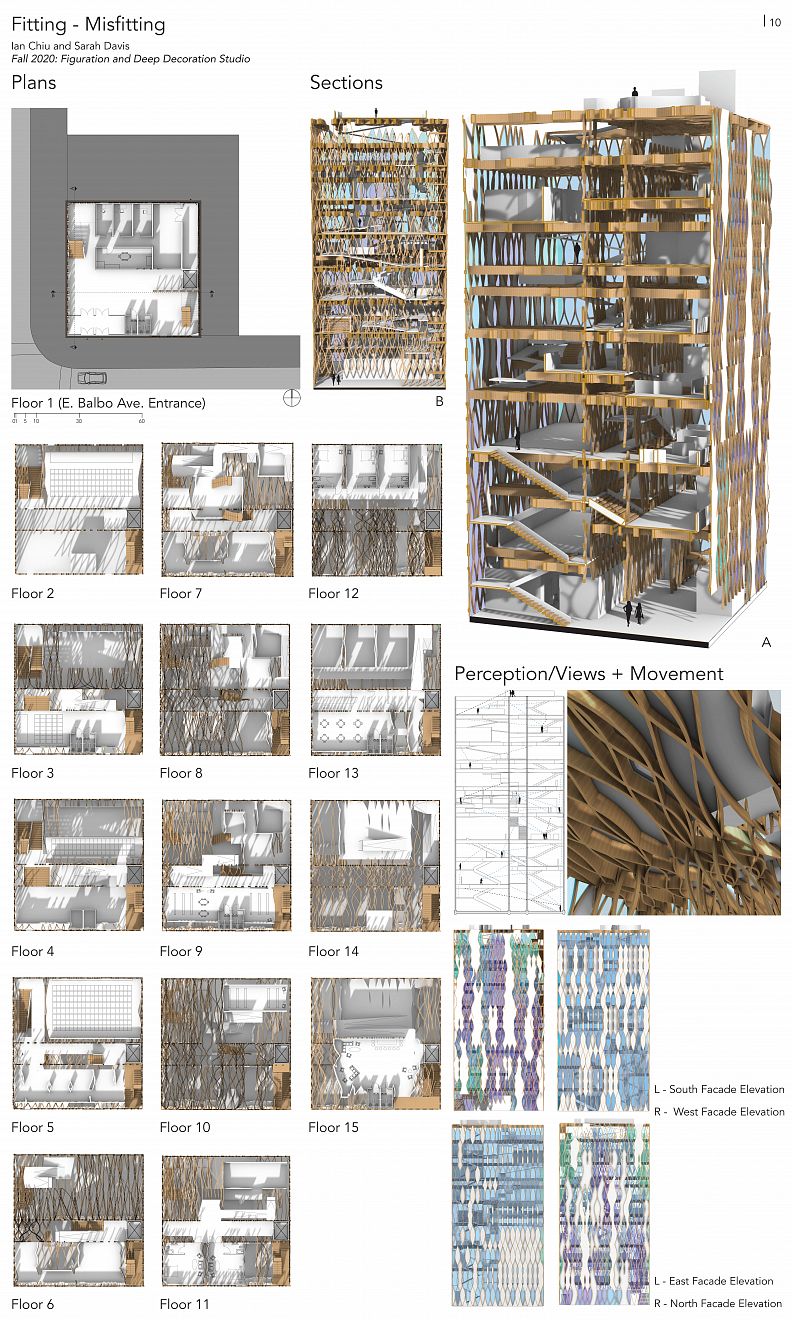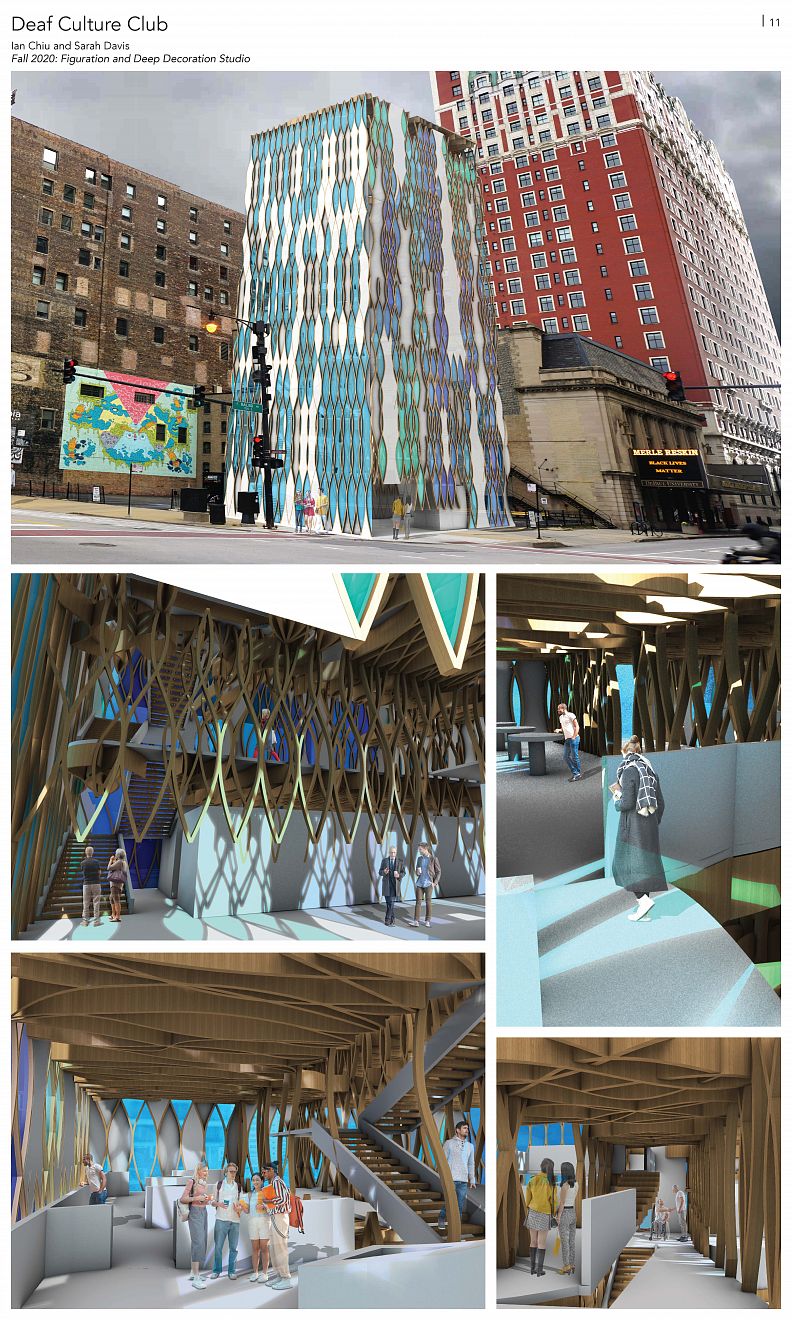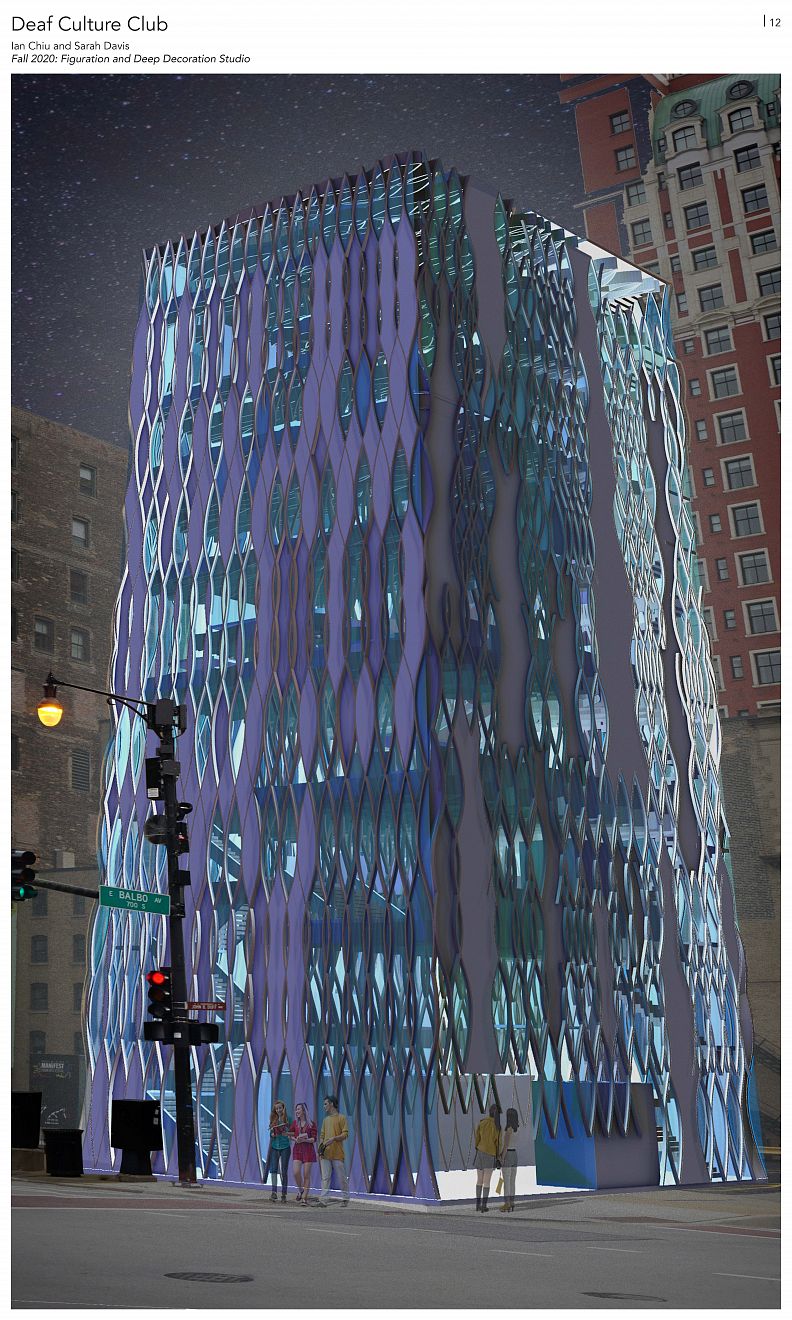Deaf Culture Club

Project idea
A project in two phases. The first phase involved researching the patterns found in Gothic tracery, beginning with the elemental figures before expanding into how those figures link to form patches and nodes, and then how the nodes can create sheets.
The second phase involved applying those sheets to the design for a club in Chicago.
Project description
In determining what club the design would be for, we researched several groups and sought to find one that would best be aided by incorporation of the sheets derived from the research phase.
Given Chicago's reputation as a host for the arts and education, the importance of the North to the Deaf community as the birthplace o American Sign Language, and how the playfulness and intricacy of Gothic tracery can be likened to that of the hand movements in ASL, we chose to have the club be one that hosts and promotes Deaf culture.
Through research of the Deaf community, it was clear that the Deaf cherish an uninterrupted visual connection between two individuals.
This need for connection and openness was a guiding factor in the design, which eschews the traditional design of a building as a collection of individual boxes that form rooms. Almost no rooms have true solid walls and club users can see through floors, ceilings, and the sheets, unifying all the varied levels of the club. The incorporation of the Gothic-inspired sheets creates a diverse array of moments throughout the design that play with when users can move or see from one place to another.
Technical information
Renderings and other drawings were created using a mixture of Photoshop, Illustrator, and Rhino.
